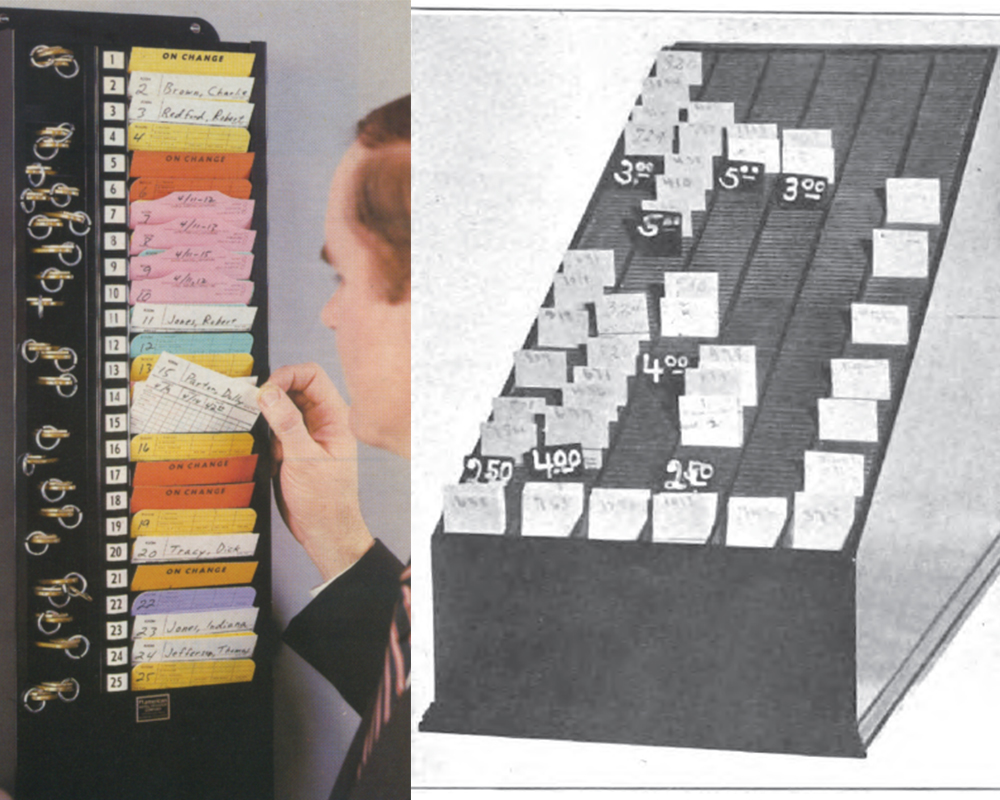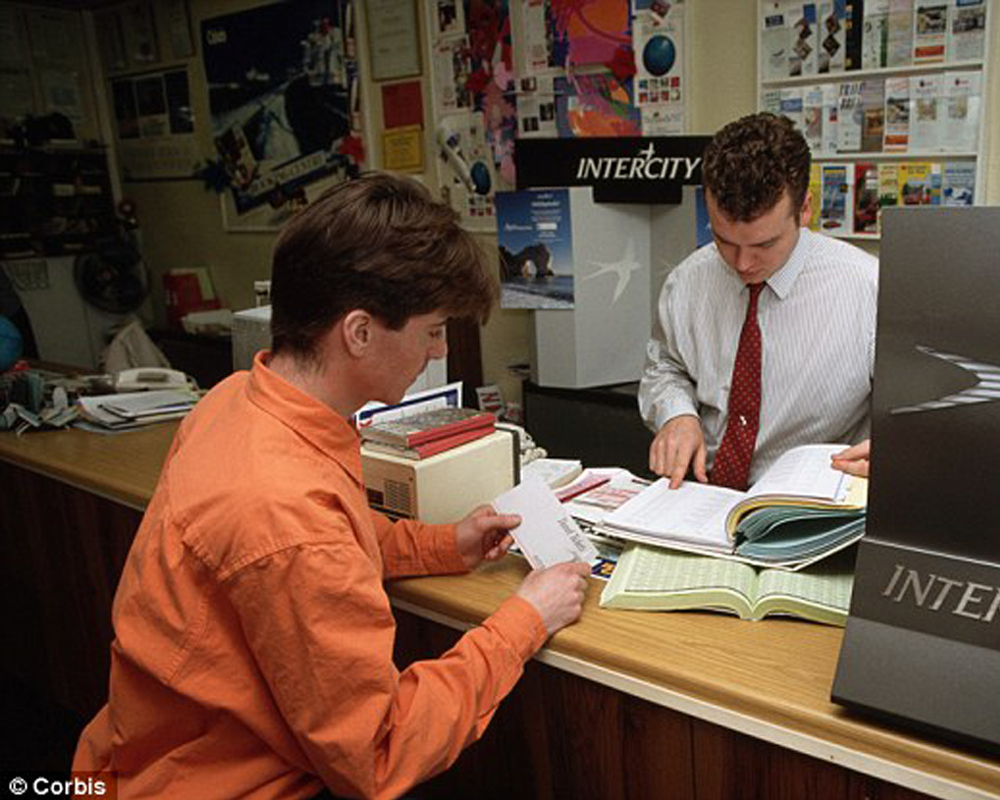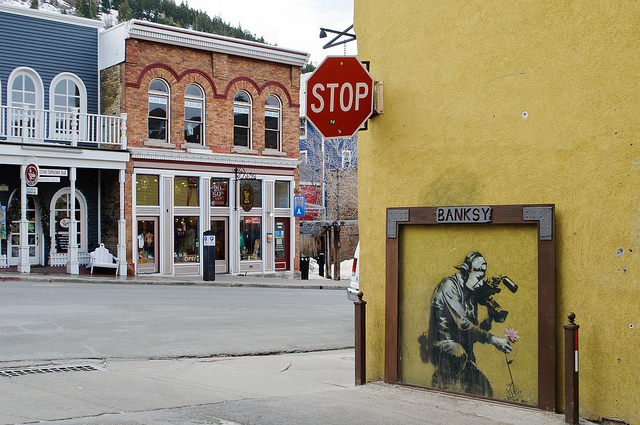Think about how you travel. How do you choose which Santa Fe restaurant to try? Where did you book your Park City lodging? Who scheduled your flight to San Diego? How much did you pay for everything?
Odds are pretty good that you use the internet to handle most-if not all-of those tasks. In a matter of minutes, you can find the best-reviewed lodging in town, shop around for the best rate, and pay for it all by tapping on the rectangle you keep in your pocket.
Now pretend all of that went away. Finding lodging requires a travel agent or a guidebook. There is no way for you to find out what the populace at large thinks of any restaurant or lodging. Airline tickets are handwritten paper slips with carbon paper. Reservations are taken from a giant board and written in a physical ledger. This isn’t a nightmare fantasy world. It’s travel before the internet.
1. To be clear, I am referring to a smart phone-just in case that wasn’t apparent.
The Process Today

A typical vacation planning scene in 2018.
Most travel planning in the 21st century starts and ends on the internet. Once a destination and date are selected, the average traveler heads straight to Google, TripAdvisor, Yelp, or other sources of aggregate information to find customer reviews for the “best lodging in (Destination).” After sifting through mountains of stars, thumbs, and upvotes, a shortlist emerges. Based on these preferences, the quest for the best deal begins. Bargain sites, price liquidators, and the property itself are consulted for the lowest conceivable price or best extras. Once a point of sale is selected, a few credit card details and a quick button press or two secure the room, complete with confirmation numbers and receipts.
This whole process can be finished in as little as five minutes of frenzied scheduling or as much as a week of careful deliberation, depending on the tastes of the traveler. Regardless of the time frame, all the power and agency in the process belong to the customer. Booking a trip in 2018 is a personal voyage that belongs to the sojourner and no one else. Seemingly endless information, choice, and validation are literally at the fingertips of anyone seeking a weekend away. But that wasn’t always the case.
Before the Web

How may we direct your call?
Long before the internet became the cornerstone of modern commerce and communication, the process of planning a travel excursion was much more complicated and opaque. It was an onerous task, fraught with perils and replete with physical documents. Only the most intrepid adventure seeker could make all their own arrangements. In those times of decentralized information and paper archives, the travel agent reigned supreme.
Travel agents were the lynchpin of the travel experience. Possessed of an encyclopedic knowledge of destinations, airlines, lodging providers, and tour operators, these middlemen pulled together the disparate and disconnected threads necessary to weave a perfect vacation. Agents survived on the commissions paid by lodging providers and airlines, taking a cut of each booking that passed through their hands. In exchange, they helped travelers locate and secure all the services necessary to carry off a successful trip.
Remember, robust travel information was not readily available to the average Joe. Finding a place to stay required direct local knowledge, studying a guide book, taking a brochure, or some other kind of investigative legwork. Reviews or ratings were occasionally included in something like AAA guides, but lacked granularity and nuance. Mostly, curious customers could get an address and a phone number. Rates, room photos, and special offers were scarce if they were available at all, and further inquiries required direct calls. Without prior experience, a lone traveler was taking a significant risk on an unknown property.
That is why travel agents were so popular. Anyone who was serious about booking a vacation used one. No matter what stage of vacation planning the client was in, a travel agent could provide reputable and expert advice to realize the perfect trip, not to mention take care of the legwork necessary to make reservations and bookings. And boy did there used to be more legwork!
No matter who was making the bookings, travel used to require a lot more actual paperwork. Nobody had to suffer through more forms, ledgers, and receipts than the lodging providers.
Ye Olde Hotelier

This sure looks convenient.
Lodging providers have it pretty easy these days. Computerized records, automated communication, central reservations offices, variable room rates, etc. There is still plenty of work to go around, but computers and digitization have completely changed the face of lodging operations in the space of a decade or two.
In days of yore, properties couldn’t change their rates on the fly to account for changing circumstances. Instead, these “tombstoned” rates, often set by season, were printed and sent as brochures, cards, and other hard copies all around the world. Thousands of pieces of printed collateral worked their way through the travel industry, setting the standard rates for the upcoming year. These prices were set in stone until the next “rack rate” update, and a poor estimate of demand or an insufficient understanding of the competitive environment could decimate profits between mailings.
Once prices and marketing materials were in the hands of travel agents and customers, calls started coming in to the reservations department. In order to coordinate the availability of rooms, a huge board-covered in dates and room types-covered the walls of the average reservations office. Caller requests were cross-checked with this huge tracking wall or other inventory system, and new reservations had to be written in the inventory ledger and sent to the inventory department, who then updated the reference board.
Everything in these older systems was manual. Telex and fax machines were cutting edge developments back in the day, making communication between travel agents, lodging providers, and airlines slightly easier. Imagine the reams, cabinets, and boxes full of old reservations, receipts, and unsent rack brochures! Think about the dozens of specialists, archivists, and operators necessary to run these operations!
The Times They Are a-Changin’

Cutting edge 90s tech.
It all seems so foreign in these interconnected, peer-driven times. Cloud-based servers, complex algorithms, and big data have replaced the carbon copies and inventory boards of decades gone by. Users book their own lodging, and travel agents are largely a fading memory. Travel has never been more convenient, nor have consumers ever been so empowered.
There have been casualties along the way. Travel agents were a booming business back in the day, but now they are gone. All those extra employees once necessary to keep track of reservations and inventory have been made obsolete. Whole industries have fallen apart and largely disappeared, and others have sprung up to service the new online economy.
As always, everything changes. For now, at least, that change has made it so much easier for ordinary people to manage their own trips and for properties to manage their businesses. As the pace of change accelerates, savvy entrepreneurs and forward-thinking customers keep their eyes locked on the horizon, looking for the next big change in the way we experience travel.
Related Articles
Things to Do During Park City’s Mud Season
Our Picks for Mountain Bike Rentals Park City
Deer Valley Ski Resort, Park City, Utah: An Overview
Park City Spring Break



![Your Guide To Park City Mountain Lift Tickets [2024-2025] Your Guide To Park City Mountain Lift Tickets [2024-2025]](https://www.allseasonsresortlodging.com/wp-content/uploads/2023/09/ski-slope-from-lift_1024x1440-1.jpg)
